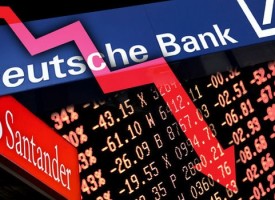The outlook for gold is the strongest in decades and the mining stocks are positioned for massive upside.
Precious Metals Take a Round Trip
July 9 (King World News) – Paul Wong, Market Strategist at Sprott Asset Management: For gold and precious metals, June was one of the toughest months in nearly five years (since November 2016). For the month of June, gold gave up all of its May gains, falling $136.76 per ounce (down 7.17%) to close at $1,770.11 on June 30. Most of the loss occurred immediately after the June 15-16 Federal Open Market Committee Meeting (FOMC) as sizeable macro-type funds were caught offside by the Federal Reserve’s (Fed) dot plot movement. Positioning was overcrowded and over-leveraged, and these investors were forced into a quick unwind. An aggressive curve flattening trade took hold, resulting in real yields spiking higher and the U.S. dollar (USD) backing up. In turn, a feedback loop for more position unwinding was created. Commodities, especially precious metals, are most sensitive to a strengthening USD and rising real rates and took the brunt of last month’s unwind and deleveraging.
Gold bullion has now pulled back to the primary trendline in place since the 2018 lows (Figure 1A).
Gold has also re-tested the breakout from the double-bottom lows ($1,750). As we head into the seasonally strong period for gold, the 14-day relative strength index (RSI) has fallen to oversold levels consistent with tradeable lows over the past few years. Silver continues to exhibit technical strength as it continues to carve out a sizeable bullish flag. The 14-day RSI also pulled back to oversold levels consistent with tradeable lows, similar to gold (Figure 1B).
What Happened?
The June 15-16 FOMC meeting showed that the dot plot increased by 50 basis points or two rate hikes by the end of 2023. The dot plot is the 18 FOMC members’ view (guess) of where rates will be when expressed as dots on a page. The movement in the dots was “interpreted” as hawkish, mainly because it was unexpected. But the move was more likely a function of the Fed’s risk management approach (the dot plot as a forwarding guidance tool) to avoid market surprises. The movement in the dots was not a monumental shift in Fed policy away from AIT. Nor was it a start of a 2013 style Fed-initiated temper tantrum. But it did trigger a significant pullback in the reflation/inflation trade. The timing of the FOMC meeting was horrible as it came a day before a very large options expiry and less than two weeks before quarter-end, when liquidity tends to dry up…
To find out which silver company just made a major acquisition that will
quadruple their production click here or on the image below

How Did it Happen?
Since the COVID vaccine and election catalysts, the most popular reflation trade for macro-type funds was the bear steepener (rising long-end yields and flat/down short end). The bear steepener trade was also synonymous with cyclical outperformance, value outperforming growth, duration shorts, long commodities, long inflation trades, etc. After several months of robust economic data, the reflation trade became overcrowded and overleveraged. With unprecedented fiscal spending coupled with the Fed’s new AIT (average inflation targeting) framework and its promise to be very patient with tightening, the reflation trade became the “sure thing.” As a result, however seemingly insignificant, the movement in the dots, by pulling forward the tightening timeline, was the equivalent of yelling “fire” in a crowded theater. The Treasuries bull flattened (long-end yields moved lower, as short-term yields rose) as stop-outs/stop-losses in the bear steepener trades and all associated carry trades were hit. A full-on squeeze ensued, accelerating chaotic moves in all asset classes. The post-short-squeeze accompanying explanation is the market has now “pulled forward” Fed tightening and possible rate increases.
Due to the substantial short position in the USD, a short squeeze was quickly triggered. Bull flatteners had the direct effect of lowering breakeven yields resulting in a spike in real yields and a strengthening USD. Gold was most affected by this immediate dual action of both rising USD and rising real yields. Figure 2 highlights the relative movement in the 5s30s yield curve during the COVID-19 shock and the current dot surprise.
Positioning and Gold Price Action
Since the March lows, most of the gold buying was from macro-type funds. In Figure 3, we break down positioning by two main groups: gold held in ETFs (mainly retail and smaller funds) and gold in reported CFTC positions (Commodity Futures Trading Commission; non-commercial and managed futures), typically larger funds. These macro-type funds generally are responsible for sudden large drawdowns in gold bullion that can be unrelated to gold bullion dynamics. They also have a very different investment process, value at risk (VaR) rules and trading strategies. Since these funds also typically use leverage, unexpected macro shocks will force positions to be covered and closed. VaR rules typically will feature a hard stop-loss process, producing surprising selling legs. CTAs (commodity trading advisors), as an example, had an estimated 75% positioning weight in their gold bullion allocation with a sell stop at $1,825. Once the gold price fell below this level, selling accelerated as stops were triggered.
Macro-type funds were not only deleveraging, but they were also de-grossing (long selling plus short covering) with an emphasis on anything in the bear steepener orbit, such as commodities and inflation hedges (i.e., gold). We expect gold to stabilize in the coming weeks as the USD and real rate squeeze fades.
Mean Reverting Trading Pattern, a Battle of Two Forces
From its Q3 2018 lows, gold has rallied from roughly $1,200 to $2,000 (climbing 67%) in a series of bullish waves. Since gold’s August 2020 peak, it has taken on a mean-reverting corrective trading pattern. The long-term fundamentals continue to strengthen for gold, which keeps the long-term primary price trend positive. However, short term, the mean-reverting trade pattern reflects a level of uncertainty as short-term traders battle out positioning trends with long-term buyers and holders. Recently, the struggle has been between the fear of tapering (replay of the 2013 swoon in gold price) and the fear of inflation and gold’s positive correlation to higher inflation levels.
Long term, the fundamental macro outlook for gold remains the strongest in decades. We are currently in a state of unprecedented expansion and reach of monetary and fiscal policies, akin to a grand experiment. Long-term, ever-expanding debt (and a record high debt-to-GDP [gross domestic product] ratio of 130%) will force policymakers to deflate the value of the debt by currency debasement (lower USD) and with deep negative real interest rates (financial repression)…
To learn which company billionaire Eric Sprott bought a
$10 million stake in click here or on the image below

Economically and politically, these two “solutions” are the only viable choices and the primary reason for bullish gold for the next several years. In Figure 4, we highlight that this condition has been going on for decades; it is only a question of degree. The dark blue line is the U.S. debt-to-GDP ratio (inverted axis). Every notable increase in U.S. debt-to-GDP has been accompanied by a lower USD (dollar debasement) and lower negative real yields (financial repression) to address the rising debt. Since 1970, real rates have been negative 13% of the time (7 years in total), and the U.S. Dollar Index (DXY) has spent 53% of the time below its 200-day moving average (negative trend). Due to the COVID shock, debt-to-GDP of ~130% is not only at a historical high, but it has accelerated at its quickest pace ever. Yes, the Fed may taper to some degree in the short term, but it will have minimal impact on dollar debasement and financial repression in the long run.
Seasonality Time: Q3 Historically Positive for Gold
As Q2 comes to a close, gold will be entering its best historical seasonality period of Q3, particularly the month of August. In Figure 5, we highlight this seasonal pattern for gold bullion and gold miners. In the past 20 years, the third quarter was the best seasonal period for gold bullion and gold miners.
Gold Miners Financials Improving as Valuations Fall
During June, gold equities gave up a little more than they gained in May but finished with positive performance for the quarter. The royalties and larger-cap gold stocks did better in June than the junior companies, even as small private placement financings continued to fund some of the smaller exploration companies for summer drill programs, an indication that markets find the sector’s risk/return profile compelling. Gold mining stocks present attractive investment values, especially at this time of year, when markets are a little thinner and just before mining companies report what is expected to be solid second-quarter profit margins and a continuation of robust free cash flow.
We have noted the improvement in the gold miners operating and financial fundamentals for more than a year. The gold industry has displayed a level of capital discipline, solid and stable margins, and robust pricing that has produced strong economics while still at an extreme discount to most industries. Though the short-term gold price is off its highs, prices are still at a level that will generate significant free cash flow to strengthen balance sheets even further. Using the GICS (Global Industry Classification Standard) Level 3 breakdown for the S&P 500 Index, there are 69 industries and subindustries. If the GDM (NYSE Arca Gold Miners Index) were included, it would be the tenth highest free cash flow yielding industry at 6.9%, while having the second-lowest EV/EBITDA multiple at 6.9x.
Figure 6A makes a quick comparison between the GDM and the S&P 500 to demonstrate the growing discrepancy across different metrics.
King World News note: 6A Is Incredibly Important!
Read This Very Carefully To Understand
Where The Mining Stocks Stand!
In Figure 6B, we highlight the valuation compression over time.
King World News note: This Spread Is Unsustainable
And Will Snap Back Like A Rubber Band Soon.
TRANSLATION:
Mining Shares Will Surge Dramatically!
In short, the gold miners are debt-free, generating twice the level of free cash flow yield, twice the margins, producing 50% higher return on capital while trading at about one-third the valuation. If inflation hedging takes hold for investors, gold miners will be one of the few industries with automatic price pass-through price increases.
No Going Back to Normal
What stood out in the post-FOMC chaotic trading was how far markets have gone down the “rabbit hole” in order to game out Fed policy. That a 50 basis point shift in a projection of where rates might be over two years out (dots moving on a page) can create such a violent reaction across all asset classes is another sign of how leveraged assets are to Fed policy. If monetary policy even started a path to “normalization” (i.e., any semblance of pre-GFC [global financial crisis] monetary policy), every asset class would probably implode. Thus, it is doubtful that the Fed can taper (much less hike rates) without serious trouble for risk assets, no matter how careful the messaging. Even if the Fed should tighten, it cannot without risk events occurring for the simple reason that the market is valued and positioned for $120 billion per month of QE and ZIRP (quantitative easing and zero interest rate policy). Moreover, the duration of most financial assets is now very long, so the Fed is hypersensitive to any signs of tightening. Lastly, with the U.S. debt-to-GDP ratio of ~130%, too much tightening carries asymmetric downside risk.
Recent history also warns of the risk associated with reducing accommodation. The Fed under Powell attempted to shrink the balance sheet and normalize rates in early 2018 and, by Q4 2018, it had nearly crashed the market. By September 2019, the Fed faced another surprise when the repo market seized up, and the Fed was then forced to restart a QE program by October 2019. During 2018, Fed action tightened financial conditions by driving up real interest rates and pushing the U.S. dollar higher. During this period, gold fell from about $1,360 to $1,200. However, once the market realized that the Fed would need to backtrack (The Powell Pivot), gold rallied to $1,500 by the summer of 2019.
The current conditions are not too dissimilar to 2018 in that a Fed reduction in liquidity resulting in a backup in USD and real yields is not tenable beyond a short time frame. Given the lessons of 2018 and the enormous expansion in monetary and fiscal policy reach, we would not be surprised if the market reacted as it did in 2018 to any tightening of financial conditions. Once it becomes clear that the Fed cannot tighten and that it must let inflation run higher than what the Street expect, gold is very likely to resume its longer, rising trend in earnest.
Also Released: China Unleashes! Plus Short Squeeze, Commodities, Real Estate And Europe’s Problem CLICK HERE.
Also Released: DEJA VU…2016 GOLD & MINER BOTTOM: Nearing Final Puke In Gold Miners, Plus Another Surprise CLICK HERE.
Also Released: There Is Growing Concern Governments Will Confiscate Gold, But Now There Is Even More To Worry About CLICK HERE.
© 2021 by King World News®. All Rights Reserved. This material may not be published, broadcast, rewritten, or redistributed. However, linking directly to the articles is permitted and encouraged.















